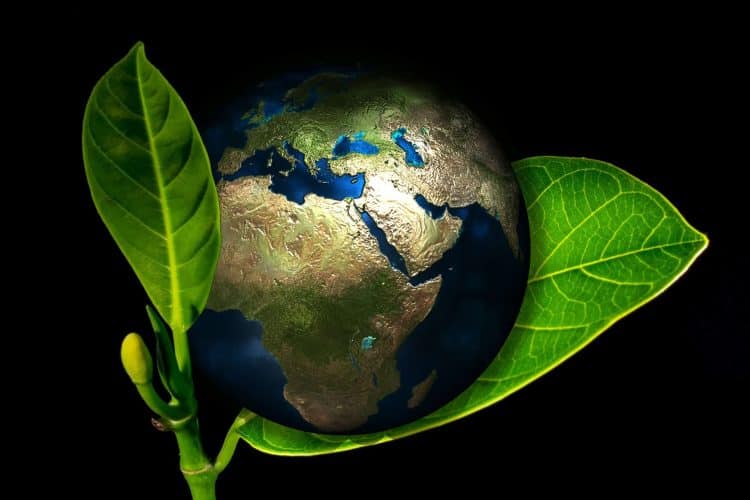Editor’s Note: There are other plants besides hemp that can take up toxins from the soil. These can include plants consumed as food. This article specifically regards hemp, as mentioned in the title.
Not all hemp is created equal. This fact is especially important when it comes to the country of origin for hemp used in cannabidiol (CBD) concentrates. While we may be accused of publishing scare tactics, given the surge of people interested in using CBD extracts for medicinal purposes, it is important to understand that there could be toxic contaminants in the end product, which further highlights the need for thorough analytical testing.
Hemp: The Great Phytoremediator
Hemp is a phytoremediator, meaning it draws toxins from soil. This can occur through several processes including phytoaccumulation, where the plant uptakes heavy metals in the soil through its roots, along with water and beneficial nutrients [1]; phytovolatilization, where organic substances are taken in, and released by the plant into the atmosphere [2]; and phytodegradation, where the plant can deconstruct the contaminant [3]. For example, Italian farmers are growing hemp in attempts to remove dioxin from unusable farm soil. In China, hemp absorbed the heavy metal cadmium from the soil that otherwise would’ve entered the food chain. [4] Hemp roots accumulate heavy metals and toxins. Some of those contaminants filter up to the stalks and leaves. [5]
Due to 20th century farming and mining practices, significant portions of the Earth’s tenable land are contaminated. [6] Hemp has great potential for cleaning up polluted soil and restoring agricultural lands. This process of using plants to siphon contamination is known as phytoremediation.
Hemp Origin Matters
By now you might have guessed why it is imperative to pinpoint the hemp origins of CBD concentrate. Industrial hemp grown in contaminated soil accumulates toxins. These heavy metals and contaminants are dangerous when highly concentrated. Imagine your CBD oil was extracted from the cadmium-infested Chinese hemp mentioned above [1], or from the Italian farmers attempting to clean up their soil. Fortunately, they are using hemp for phytoremediation and not to make consumer products.
But if the hemp is grown in a country with relaxed regulations and oversight, farmers may not realize their plants are soaking up contaminants. Manufacturers in these countries can cut costs by skipping contaminant testing.
Do Your Research & Choose Wisely
The solution to this dilemma is to research where and how the hemp was grown. Here are some parting thoughts:
- Choose hemp grown in the United States, or another country with a robust and established consumer regulatory program.
- Look for organic hemp farms with FDA approval; organic agriculture has the advantage of restricting pesticide use.
- Verify that the CBD concentrate has been tested by a third party for contaminants.
- Ask for a product’s certificate of analysis (COA), which is a lab test of CBD and contaminant content. The testing lab should meet ISO 17025 standards.
- Avoid CBD/hemp products and companies that neglect to provide this information.If the label is blank and the product vendor has no idea, run for your life.
CBD concentrates derived from industrial hemp require close inspection regarding the country of origin. With a little research, however, you can ensure that your wellness product is safe and free from toxins.
References
- Kos, B. & Lestan, D. “Soil Washing of Pb, Zn, and Cd Using Biodegradable Chelator and Permeable Barriers and Induced-Phytoextraction by Cannabis sativa“, Plant and Soil, 2004, Volume 263(1): pp.43-51. Times Cited = 49. Journal Impact Factor = 2.969.
- Limmer, M. & Burken, J. “Phytovolatilization of Organic Compounds”, Environ. Sci. Technol., 2016, Volume 50 (13), pp 6632–6643. Times Cited = 22. Journal Impact Factor = 6.198.
- Newman, L & Reynolds, C. “Phytodegradation of Organic Compounds”, Curr Opin Biotechnol., 2004, Volume 15(3):225-30. Times Cited = 310. Journal Impact Factor = 8.035.
- Shi, G. et al. “Cadmium Tolerance and Bioaccumulation of 18 Hemp Accessions.” Biotechnology and Applied Biochemistry. 2012, 168/1/163–173. https://doi.org/10.1007/s12010-011-9382-0. Times Cited = 23. Journal Impact Factor = 1.429.
- Citterio, S., et al. “Heavy metal tolerance and accumulation of Cd, Cr and Ni by Cannabis sativa” Plant and Soil. 2003, 256/2/243-252. https://doi.org/10.1023/A:1026113905129. Times Cited = 59.Journal Impact Factor = 2.969.
- Macek T., et al. “Phytoremediation of Metals and Inorganic Pollutants.” In: Singh A., Ward O.P. (eds) Applied Bioremediation and Phytoremediation. Soil Biology, 1/135-157. https://doi.org/10.1007/978-3-662-05794-0_7. Times Cited (Book) = 52. Times Cited (Article) = 4.












